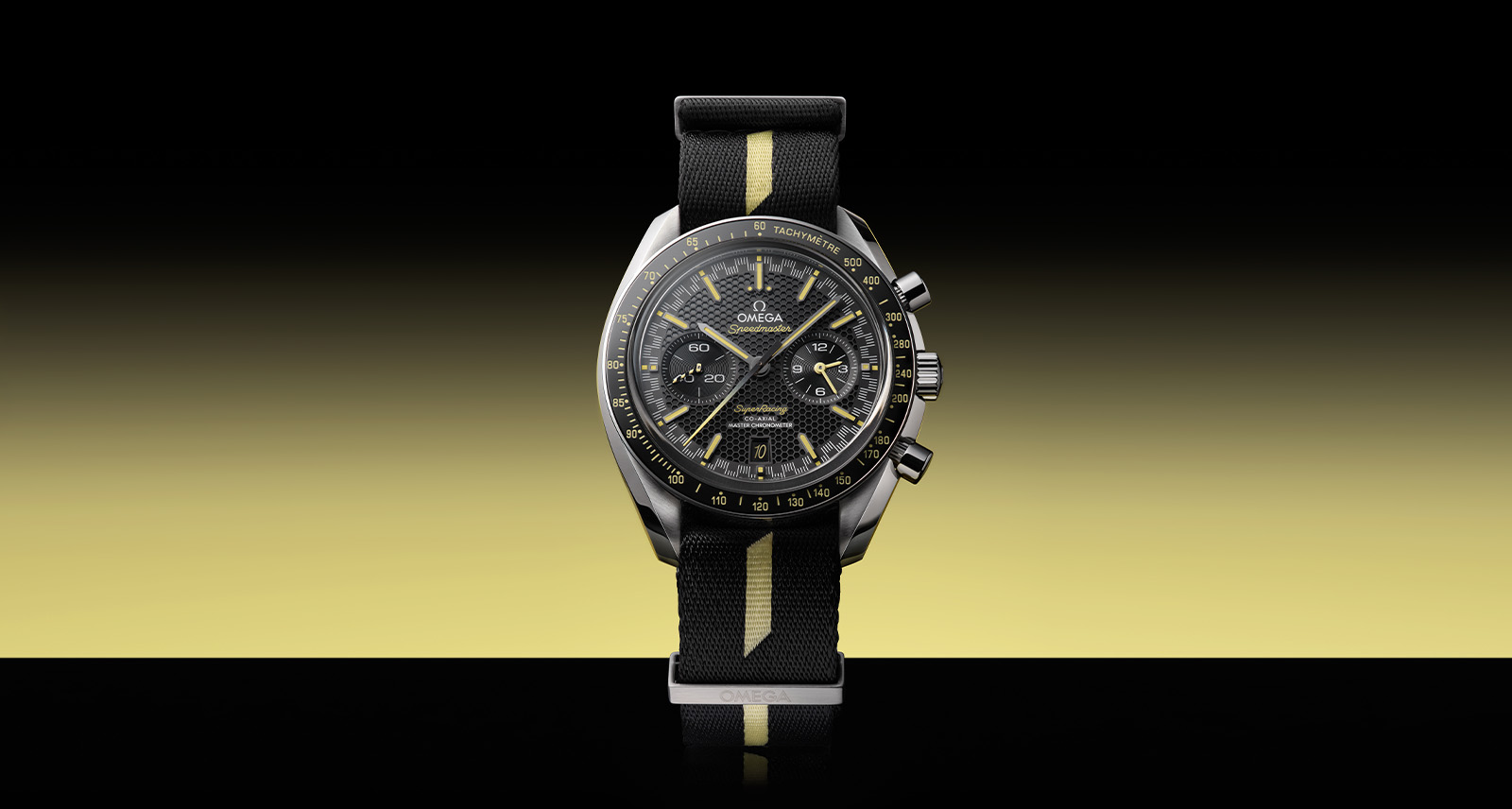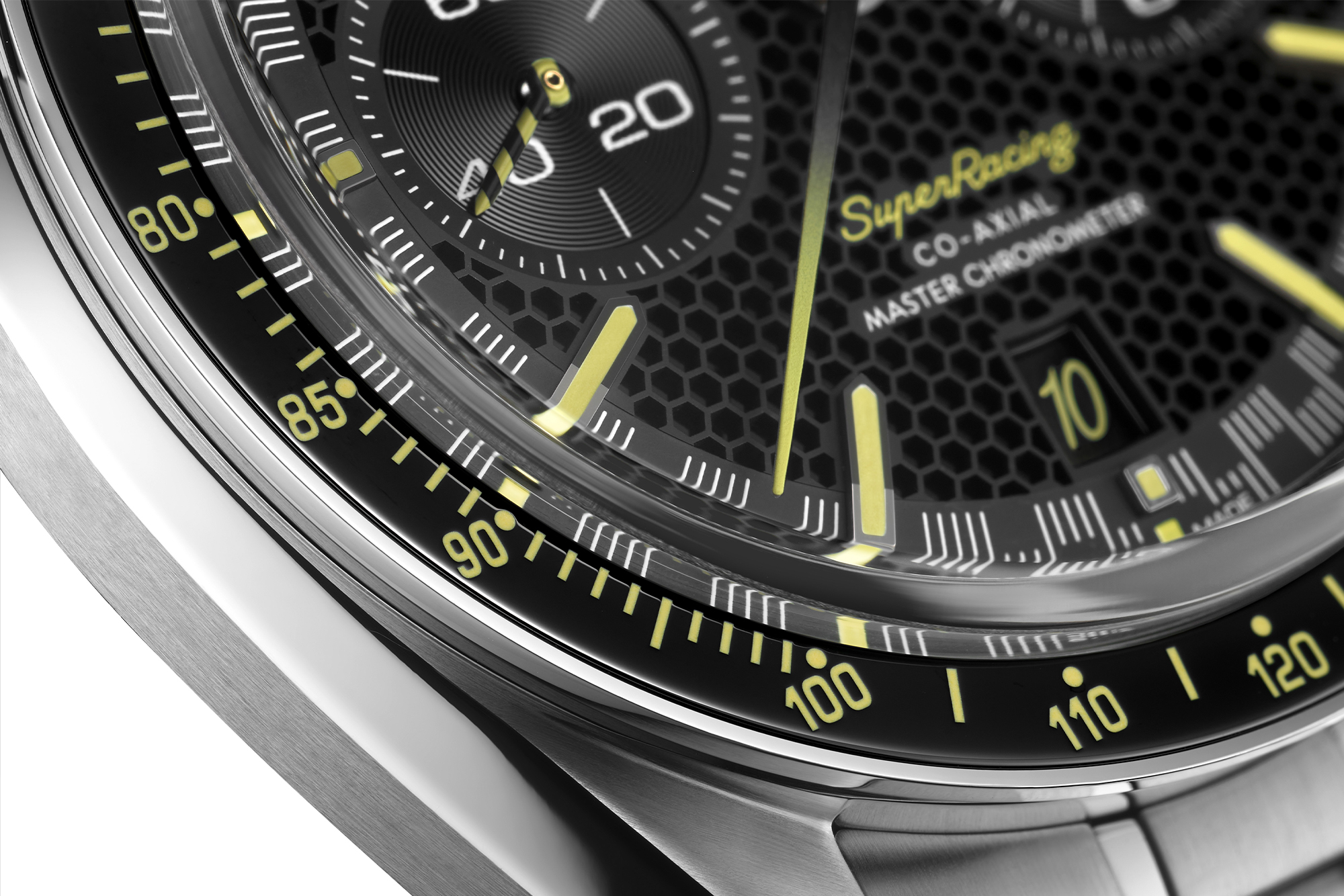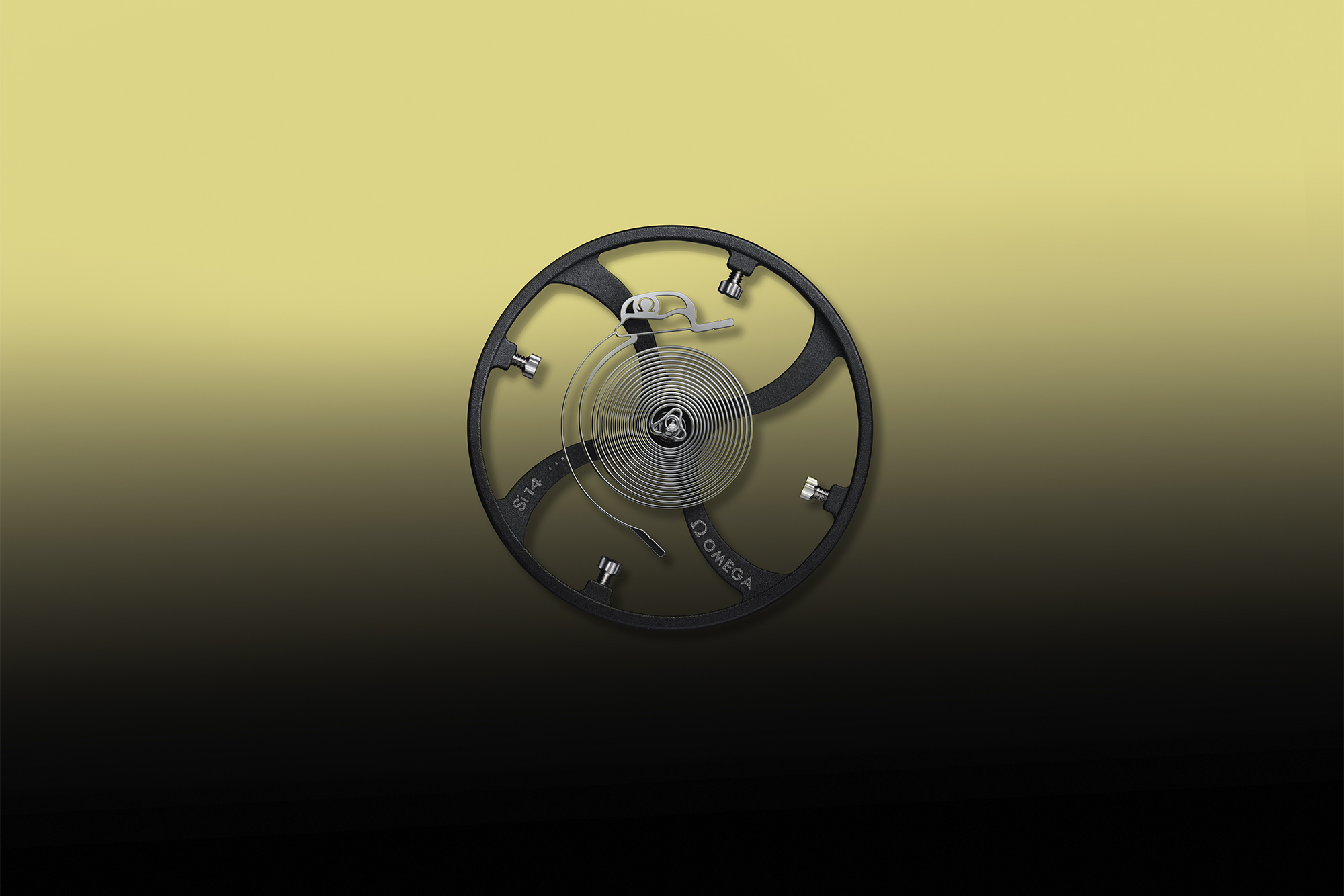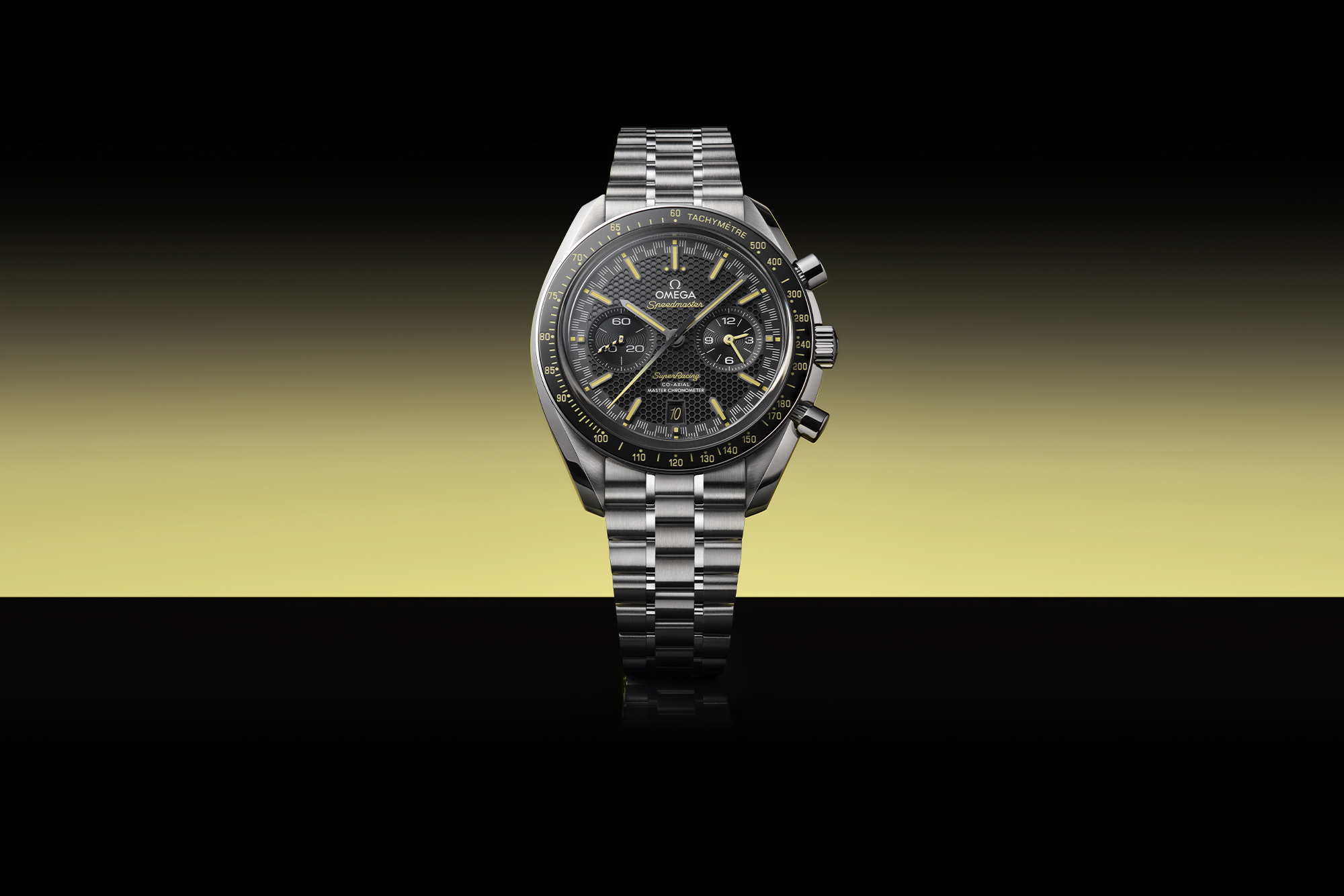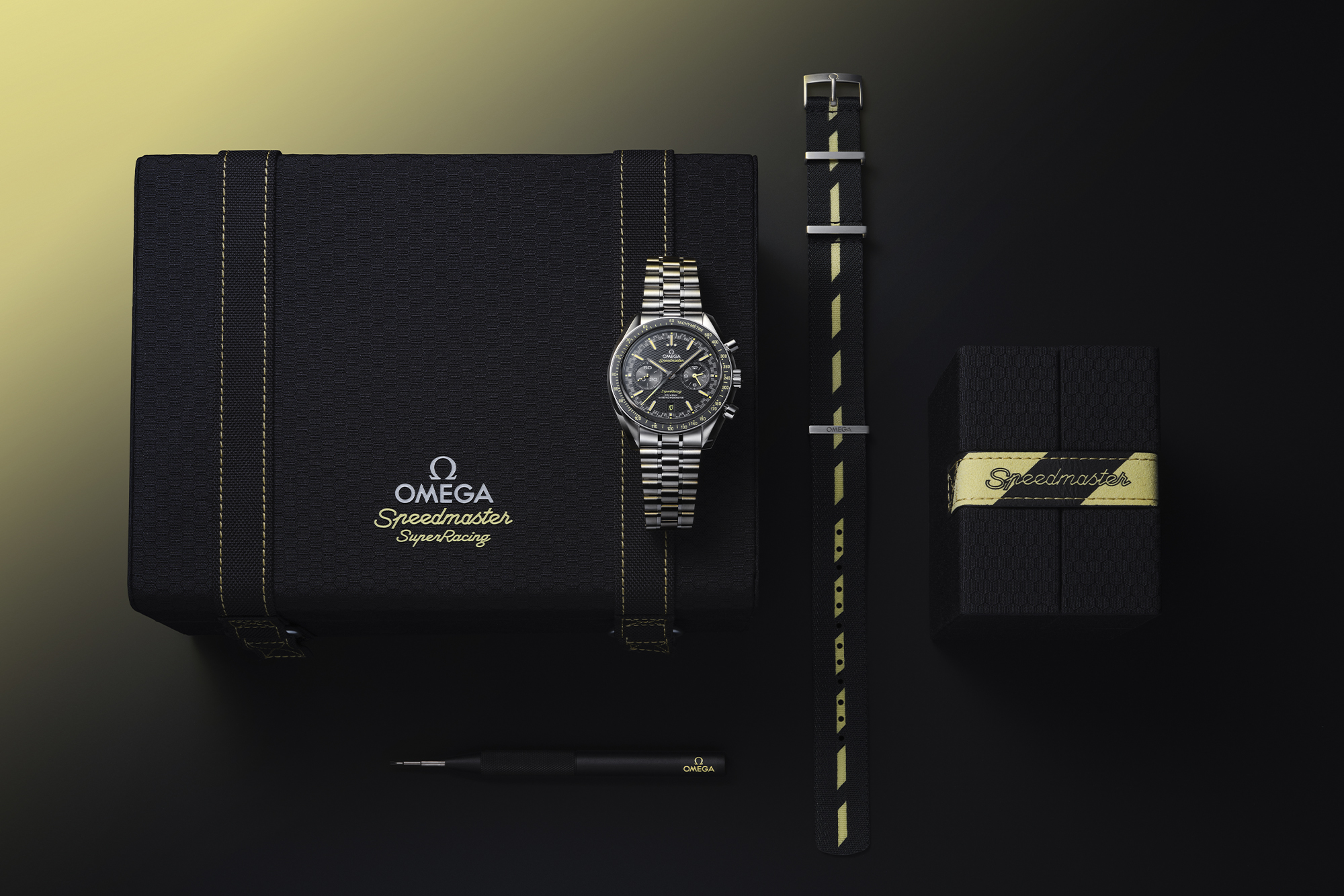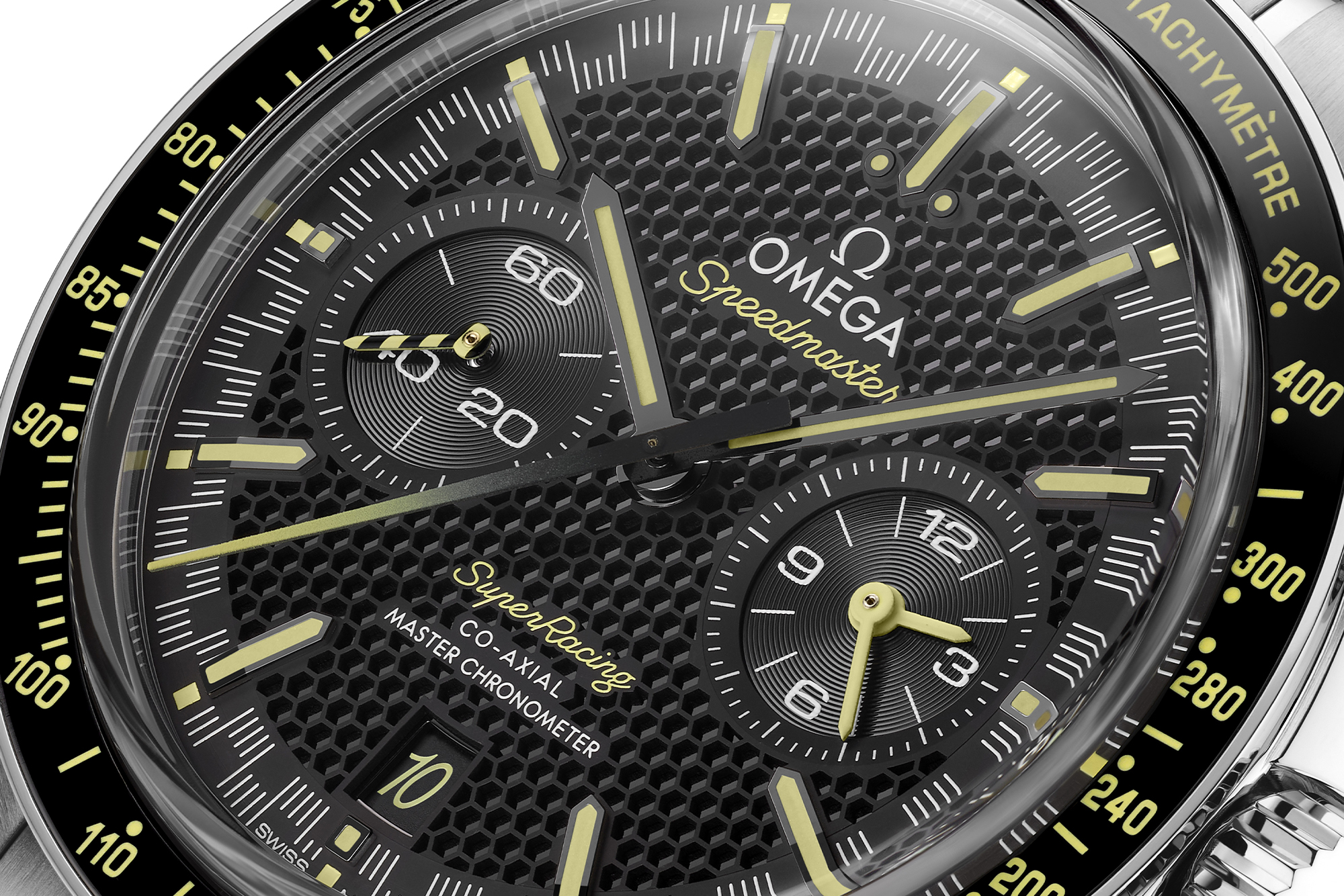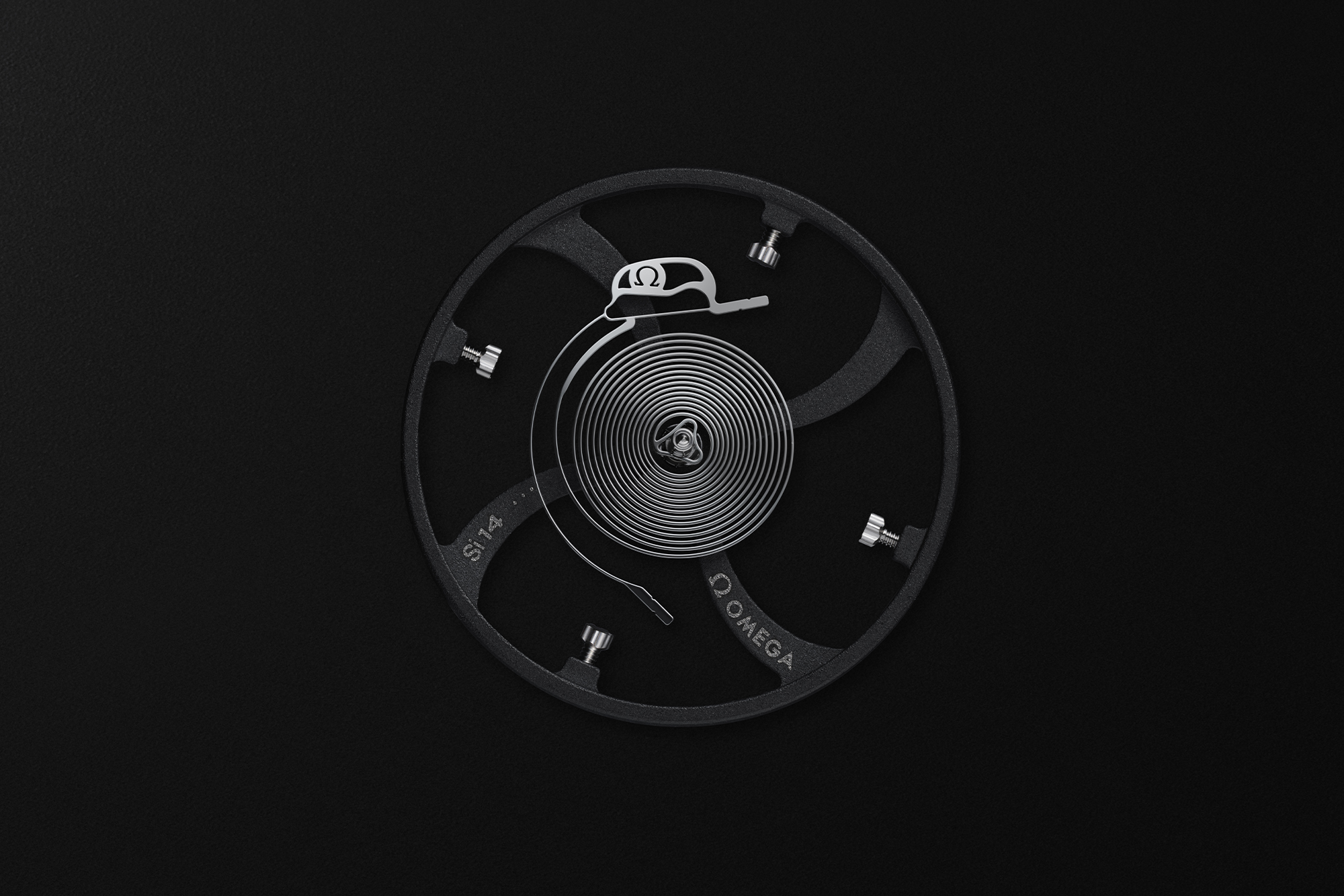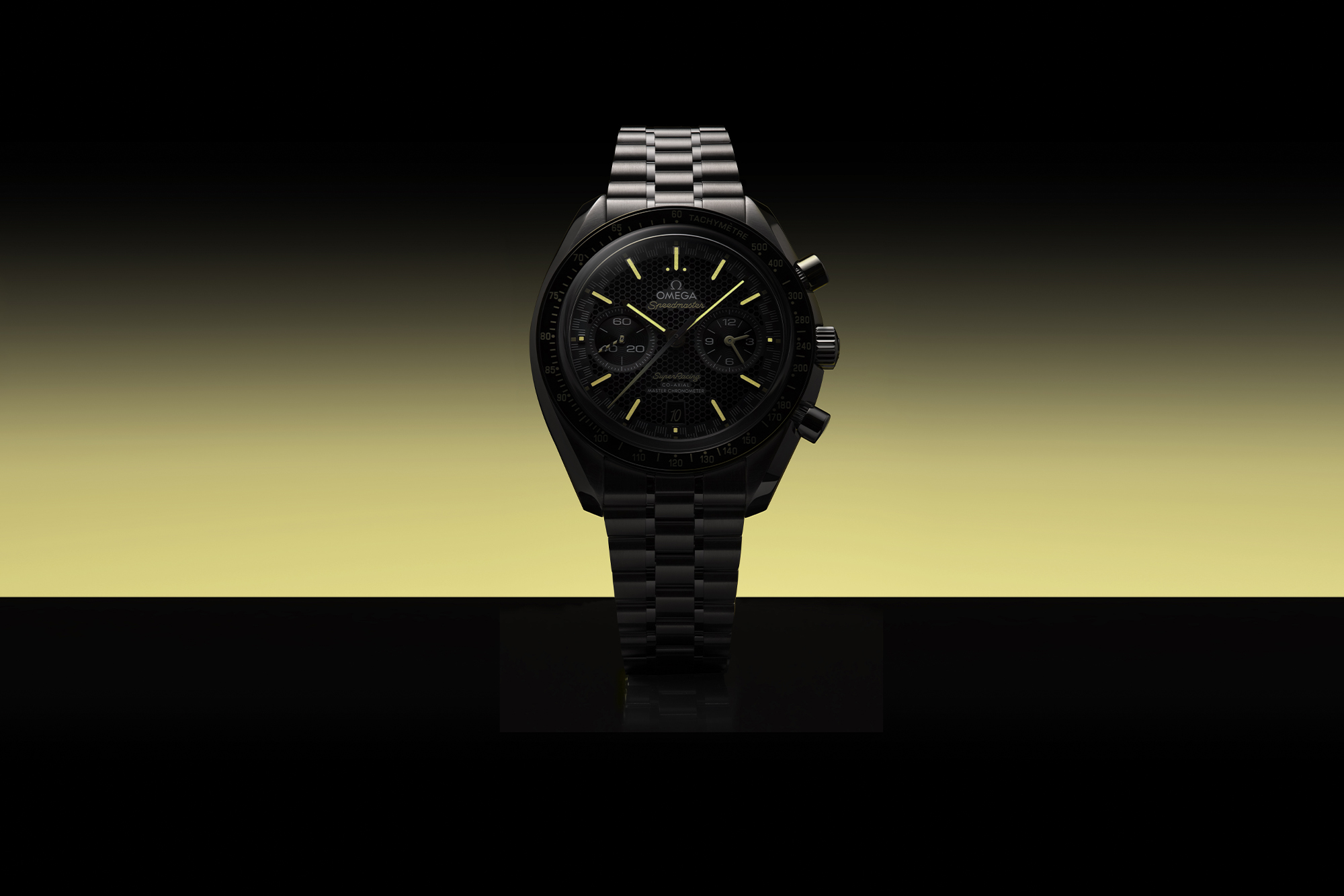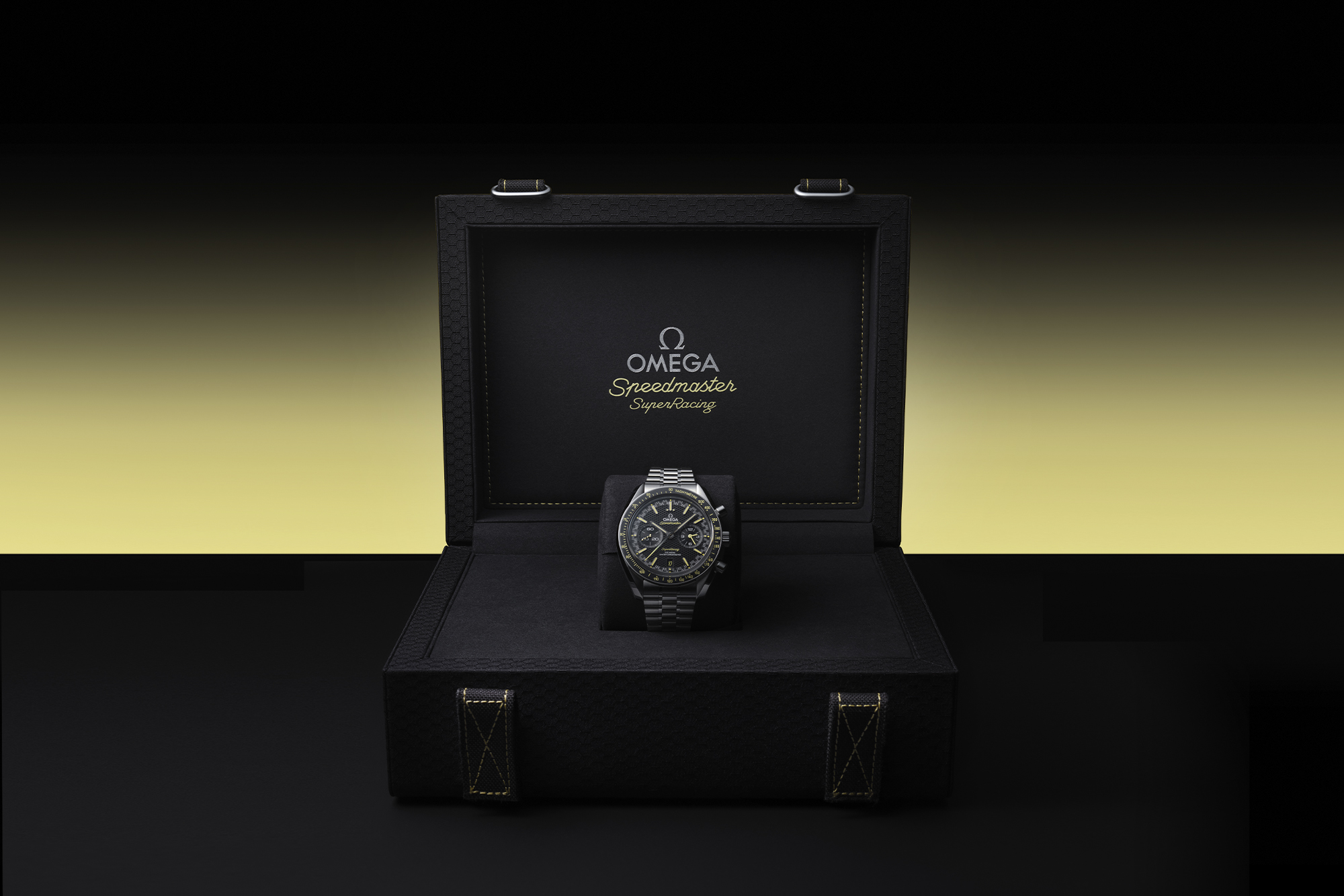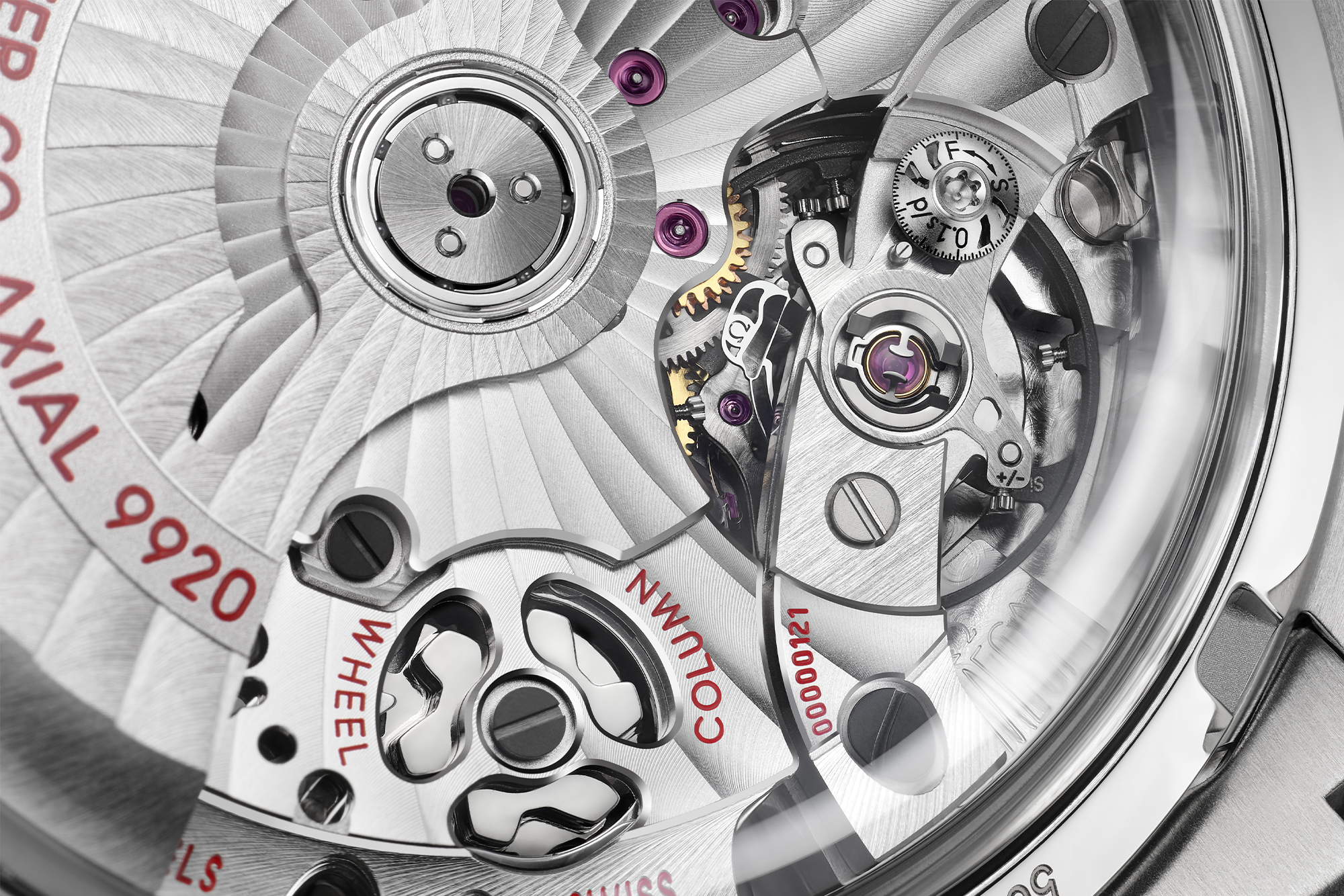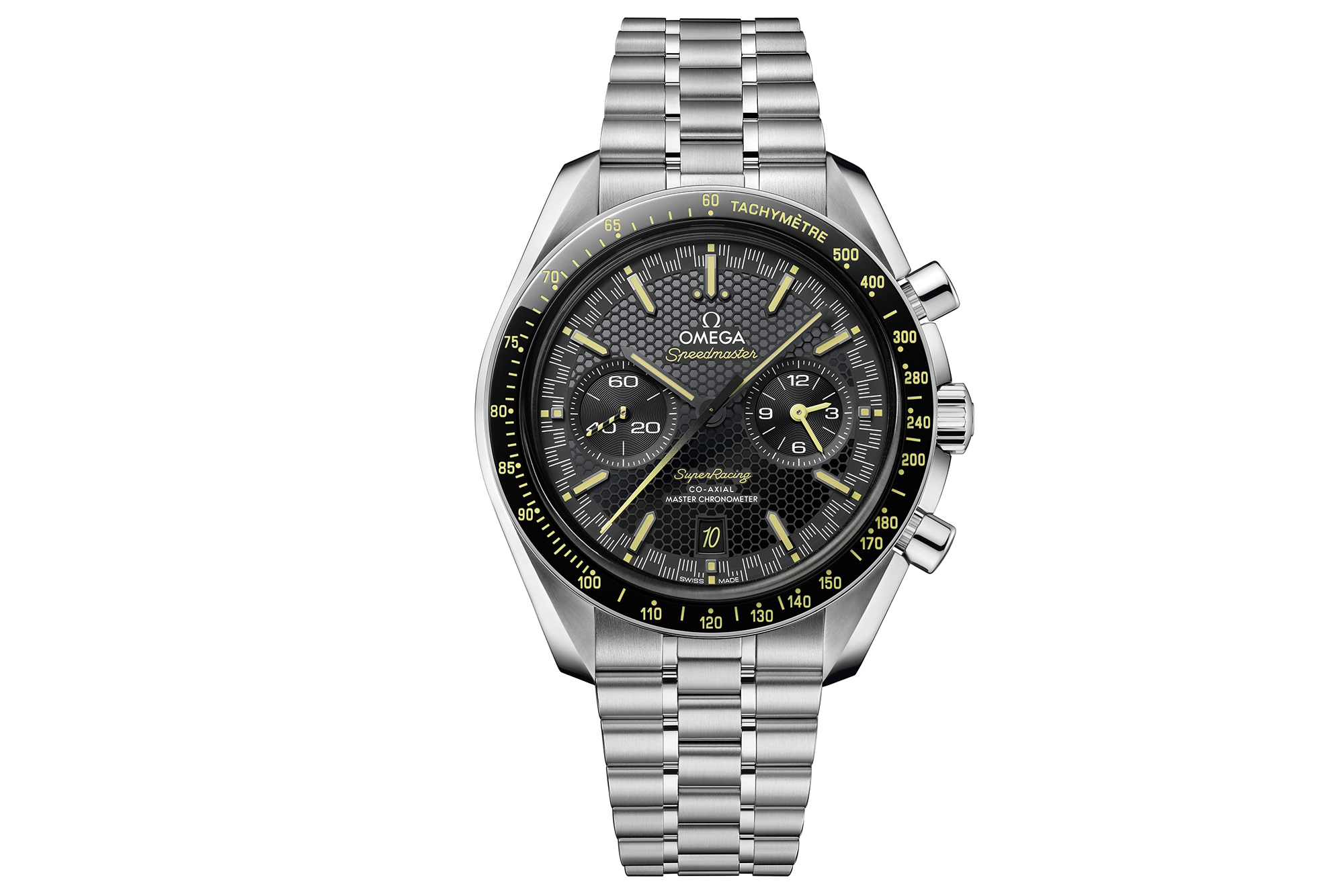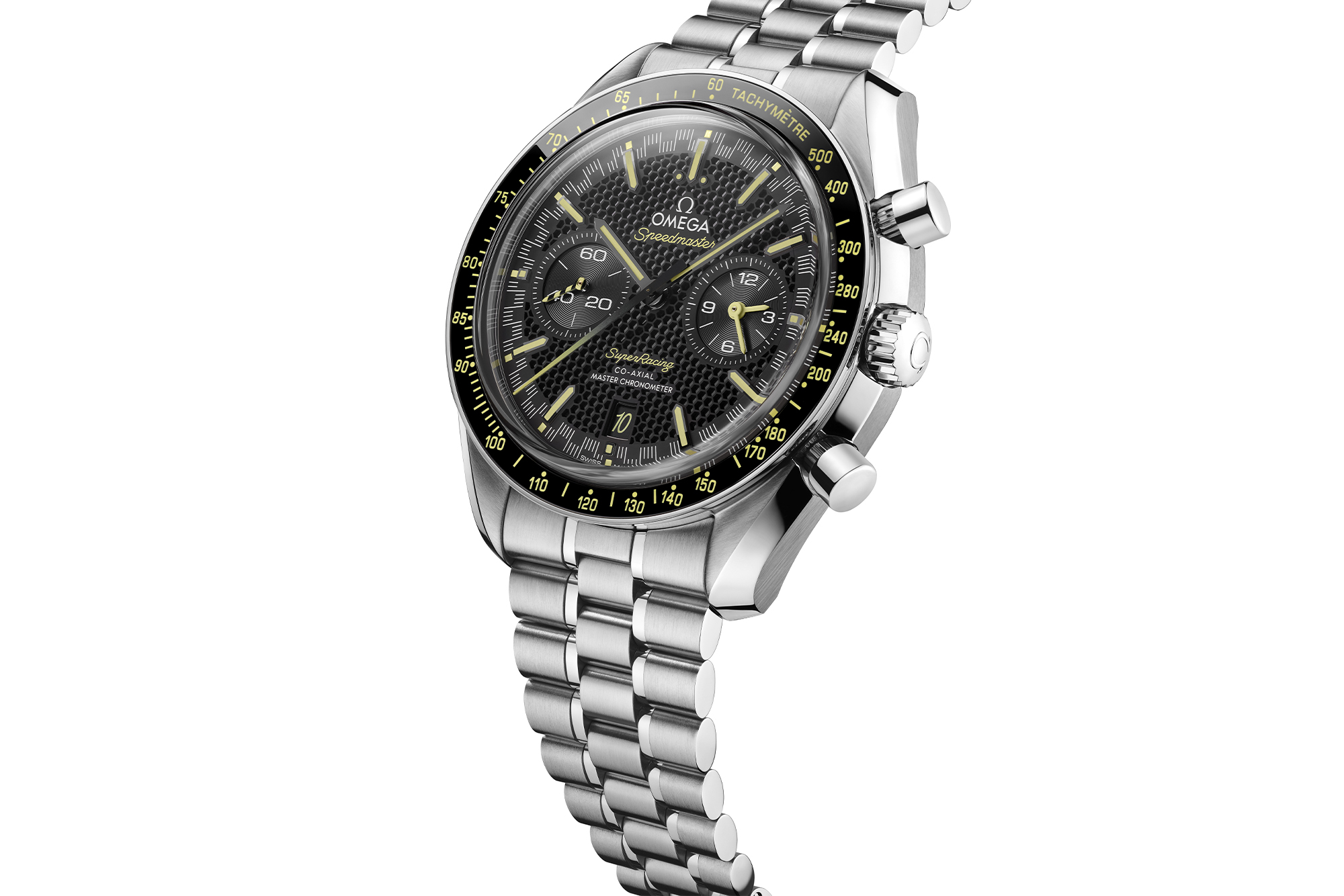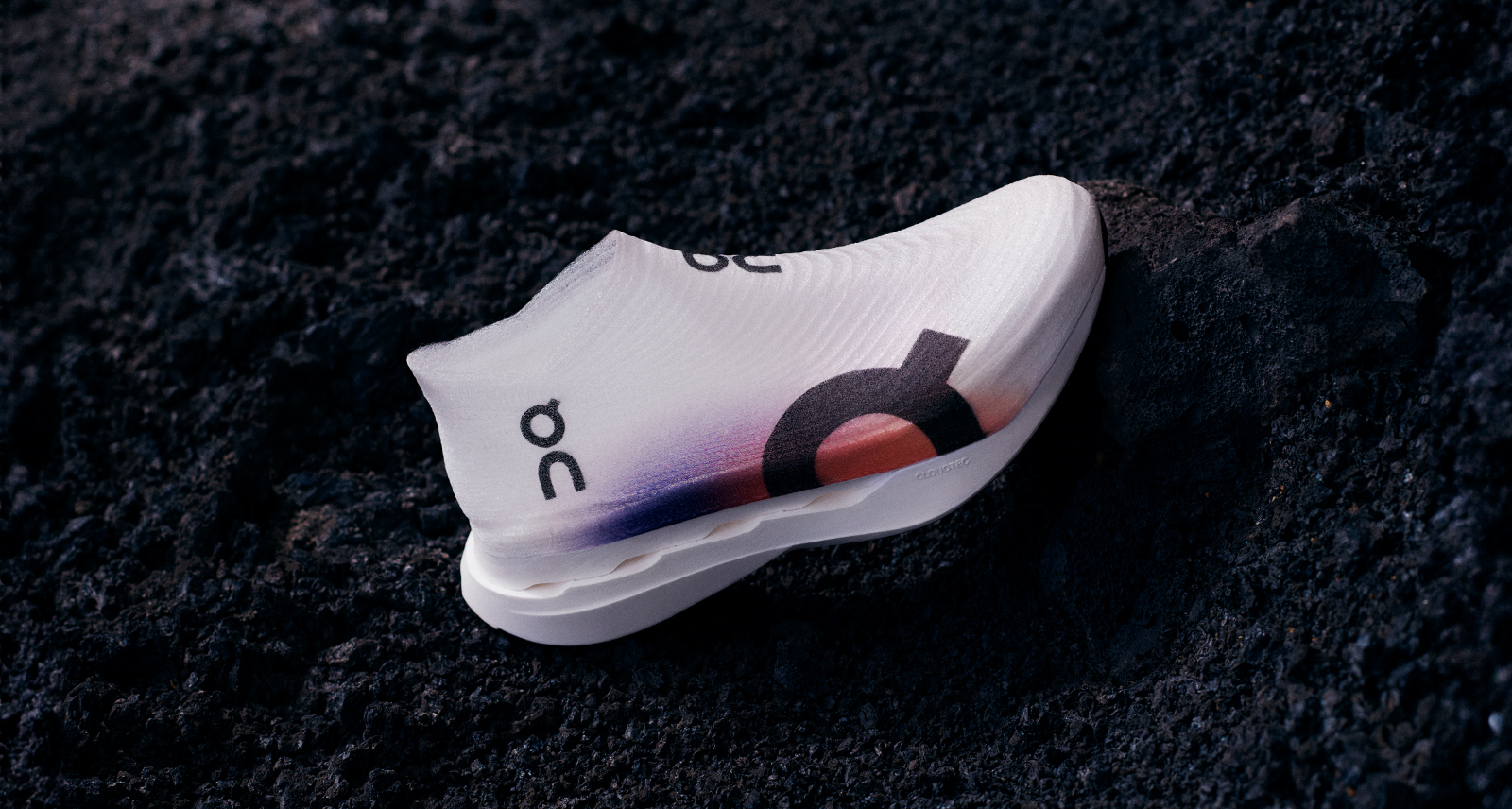The New Speedmaster Super Racing Reinvents the Wheel
Since its debut in 1957, the Omega Speedmaster has evolved and taken many new forms, from the oversized Alaska Prototype to last year’s X-33 Marstimer. The recently-announced Speedmaster Super Racing, however, marks a major milestone for the brand. While the watch itself, in a bold black and yellow livery with a matching black and yellow nylon NATO strap and honeycomb dial, makes a sporty addition to the Speedmaster family, what’s inside this chronograph is even more remarkable.
The new Speedmaster Super Racing is powered by the brand’s Co-Axial Master Chronometer 9920 movement, which features a new and innovative set of components called the “Spirate System.” In addition to being certified by METAS for accuracy and anti-magnetism, the new movement allows the watch to achieve certified precision of only 0/+2 seconds a day. The heart of the Spirate System is a revolutionary new patent-pending spiral, the Si14 balance spring, made from a silicon wafer that’s manufactured using a proprietary new process called DRIE (Deep Reactive Ion Etching). The system enables a watchmaker to fine-tune the watch within plus or minus 0.1 seconds per day — a truly impressive degree of precision.
While the Speedmaster Super Racing features all of the hallmarks of the Speedmaster line, it pays homage to Omega’s groundbreaking 2013 Seamaster Aqua Terra >15’000 GAUSS — the world’s first truly anti-magnetic watch — in its bold yellow accents. These include a racing-style minute-track and a black ceramic tachymeter scale bezel ring featuring yellow “grand feu” enamel, a shade that’s also used on the gradient chronograph hand and striped small seconds hand at 9 o’clock. The watch’s 60-minute/12-hour recorder at 3 o’clock, meanwhile, does double duty as a second time zone indicator. Finally, the dial’s unique honeycomb pattern references a concept watch on display at OMEGA Museum which withstood an astonishing 160,000 GAUSS magnetic field — a nod to the Super Racing’s anti-magnetic chops.
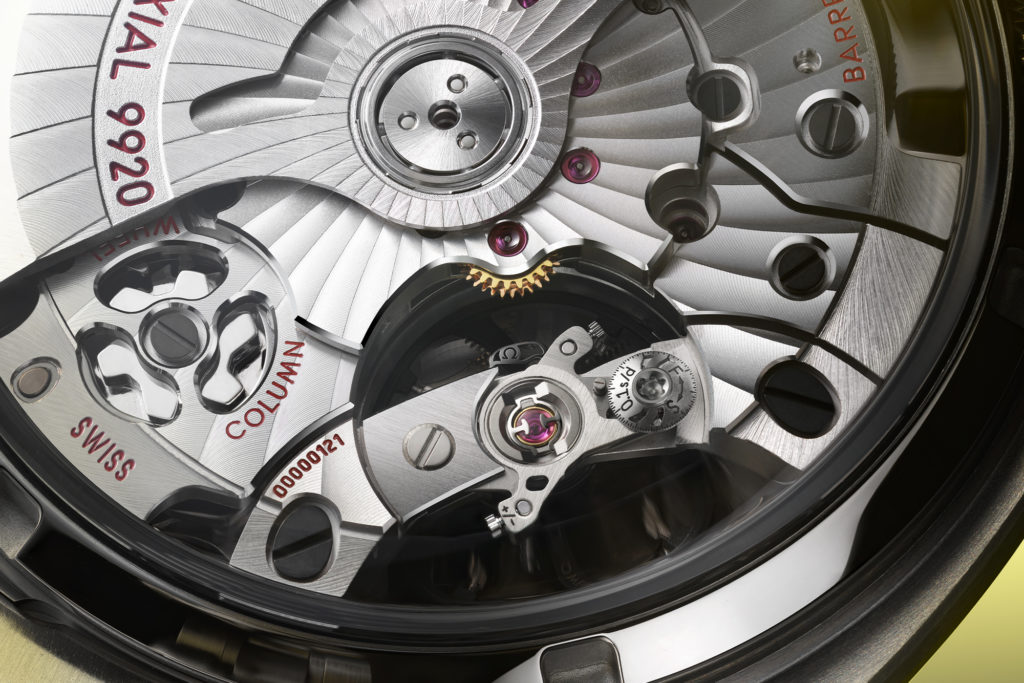

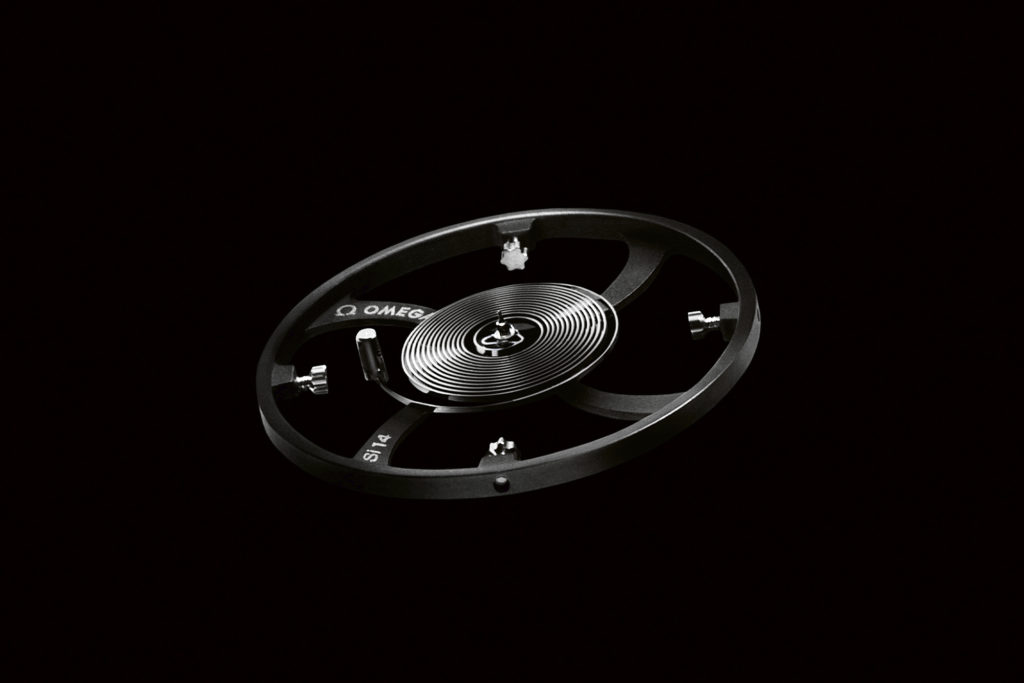
The new movement is just the latest in a long line of achievements from Omega, a brand which has been moving the needle of innovation for decades. In the last 25 years alone Omega has introduced the co-axial escapement and the silicon balance spring, both of which have increased watches’ accuracy, shock resistance, and anti-magnetism. After the introduction of the world’s first truly anti-magnetic movement in 2013, Omega set a new standard for accuracy in 2015 with its Master Chronometer certification by the Swiss Federal Institute of Metrology (METAS). The 283-step process involves eight tests over 10 days and is designed to push a timepiece to its absolute limits while exceeding previous industry benchmarks. The new Speedmaster Super Racing and its micro-adjustable Spirate System raise the bar yet again.
Learn more about the Omega Speedmaster Super Racing Co-Axial here.
